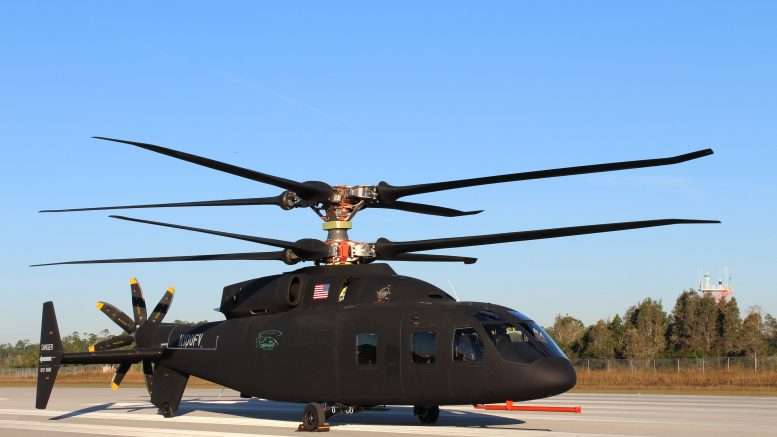
Sikorsky-Boeing joint effort for Army’s assault aircraft program makes first flight

The Sikorsky-Boeing SB-1 Defiant, one of two aircraft competing for the US Army’s Future Long Range Assault Aircraft program, has finally made its first flight—a short bit of hovering around an airfield at a Sikorsky facility in West Palm Beach, Florida. The flight comes over 15 months after the Bell V-280 Valor (the other competitor for the program to replace the Sikorsky UH-60 Blackhawk) took flight. But the reasons for the delay are pretty straightforward: the SB-1 prototype is only the fourth actual aircraft ever built using Sikorsky’s Advancing Blade Concept rotor design, while the V-280 is based on the (relatively) mature technology behind the V-22 Osprey tilt-rotor.
The Defiant helicopter uses two stacked, contra-rotating rigid composite rotors for its lift and a pusher propeller for thrust at high speeds. Since it is a true helicopter, it has a much smaller footprint than the V-280, which has two tiltrotors positioned at its wingtips. At least in theory, the Defiant will handle more like a traditional helicopter when maneuvering in tight quarters, such as the urban environments that the Army has placed particular emphasis on in its future war planning. Manipulation of the pitch of the rotors could make for more agile maneuvering.
That, however, remains theory.
The Defiant is the conceptual descendant of the X-2 experimental helicopter and the S-97 Raider—a prototype light combat helicopter internally developed by Sikorsky, of which only two were built (and one of which was totaled in an “hard landing” during testing). They both used the Advancing Blade Concept, a design that uses a combination of rotor design and software to overcome the aerodynamic challenges that have limited helicopter airspeeds in the past. In conventional helicopter rotor designs, drag near the blade tip on the advancing side of the rotor increases dramatically at higher air speeds, resulting in shocks and vibrations in the helicopter’s blade. The design of the SB-1’s rotors limits the drag on the advancing blade. Software helps adjust the orientation of the closely stacked rotors to keep them from crashing into each other.
The X-2, the first Advancing Blade Concept helicopter, unofficially broke the speed record for rotary-wing aircraft in 2010 by flying at 250 knots (287 miles per hour). That’s similar to the speed goals for the SB-1, which is a much larger helicopter.




